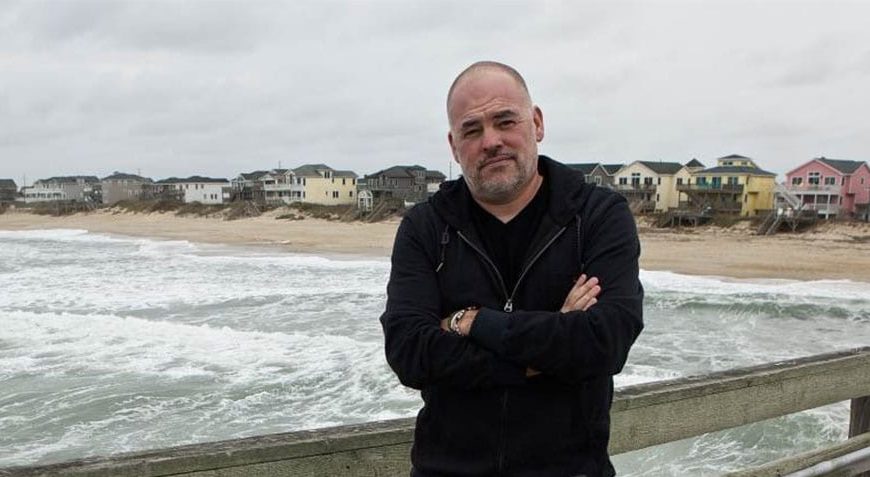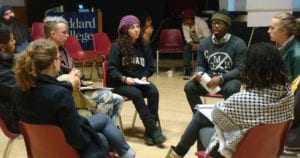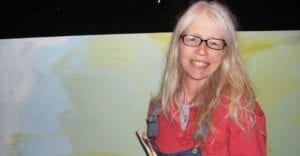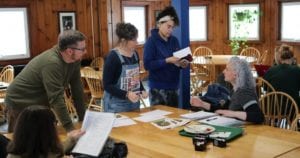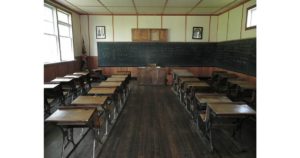
Aristotle’s Poetics. Horace’s Ars Poetica. Freytag’s diagram. Syd Field’s paradigm. Frank Daniel’s sequence approach. For more than two millennia dramatic theorists have sought to trace, map and/or illustrate the shape and technical elements of a story told in dramatic form.
Exposition, rising action, climax, dénouement and resolution are the elements of what I’ll call visible structure, exactly what dramatic structure diagrams like Freytag’s depict in geometric terms.
But beyond visible structure, intriguing plot and compelling characters, there can be another kind of structure at work in a script. Call it invisible structure. Like music playing softly from a distance, invisible structure can infuse a script with deeper meaning, poetic metaphor, and artful inner-shape.
So, how do you do invisible structure? You steal it.
A structure I’ve stolen again and again is from Swiss psychiatrist Elisabeth Kubler-Ross. In her work on death and dying, Kubler-Ross described five emotional stages (I like that word stages here) terminally ill people experience: denial, anger, bargaining, depression and acceptance. I find how it tracks emotional change irresistible. A character who goes from denial to acceptance, suffering along the way, experiences change in a dramatic way. Your story doesn’t have to be about terminal illness, or grief, or death for the five stages of grief to be of use.
I introduced Kubler-Ross’s stages of grief to my undergraduate playwriting students. A few weeks later a student brought a one-act play to workshop. We cast it and read it aloud. The writing was edgy and surprising, serious, funny, and then serious again, and uncommonly tight for an early draft. All agreed that it was the student’s best writing of the semester.
When class ended, the student asked me if I’d noticed that he’d used the Kubler-Ross stages as the structure for his play. I hadn’t, really. I had only sensed the sure-handedness of a sturdy, invisible design, the thing that held me in its thrall. Only a subsequent critical reading revealed exactly how the play’s invisible structure, beautifully repurposed, expressed and mirrored the protagonist’s emotional journey. Ah, structure!
The late American playwright Romulus Linney defined drama as one character making judgements about another before all the facts are known.
Recently, I served on a jury in a felony murder case. I like to think I was a good juror. I formed no opinion as to the defendant’s guilt or innocence ahead of weighing all the evidence. I listened closely to all who testified. I considered the physical evidence with care. I took notes. I paid close, dispassionate attention, as I had sworn I would. But writers are always writers, even when we’re not writing—yes, even when a man’s freedom hangs in the balance. So, from within the trial process, writer-me was aware of the compelling order and structure of the proceedings.
A criminal trial is, of course, a rich and naturally compelling dramatic structure model. But I wondered how a family drama (or any story of human affairs) having nothing to do with a courtroom might be infused with the invisible structure of a criminal trial. My mind began to populate with ideas for how I might use voir dire, opening statements, prosecution, defense, cross examination, closing arguments, deliberation and verdict in the telling of a story about a dysfunctional family and their secrets.
During a craft talk at the liberal arts college where I teach playwriting, David Henry Hwang said he loved Peter Shaffer’s play Amadeus and wanted to write his own Amadeus. So he stole the structure of Amadeus and gave us M. Butterfly. Read Amadeus, then read M. Butterfly. You will see the genius of Hwang’s theft.
Edward Albee has said most of what he knows about playwriting he learned from looking at architecture and listening to classical music. He’s talking about structure.
There’s a fine little book by Matthew Frederick called 101Things I Learned in Architecture School that I’ve used as a dramatic writing craft book for my students. In it, Frederick writes that how we arrive in an architectural space has a strong influence on how we experience that space. “A tall, bright space will feel taller and brighter if counterpointed by a low-ceilinged, softly lit space. A monumental or sacred space will feel more significant when placed at the end of a sequence of lesser spaces.” Dramatists are architects. We build invisible structure into our stories when we give our audience a romantic two-character scene followed by a five-character brawl. When we go from a dank interior to a scene drenched in light.
Once you start looking for them, you will find the world is full of ready-made structures you can hide inside your dramatic scripts.
Use 12 three-minute scenes as a structure for a play about boxing, or, better yet, for a play about two characters duking it out over something each is willing to go to the mat for (which should always be the case in our plays).
Read haibun, the Japanese poetic form, then write a lyrical monologue that ends with the singing of a few lines of a song.
Write a play about race in America. Use the structure of a Catholic mass for the final act. Maybe set the final act in a bar? Hell, while I’m at it … how would you translate the Stations of the Cross into an invisible structure for a play about … what?
As the saying goes, “Good artists borrow, great artists steal.” And what they steal are structures.
###

